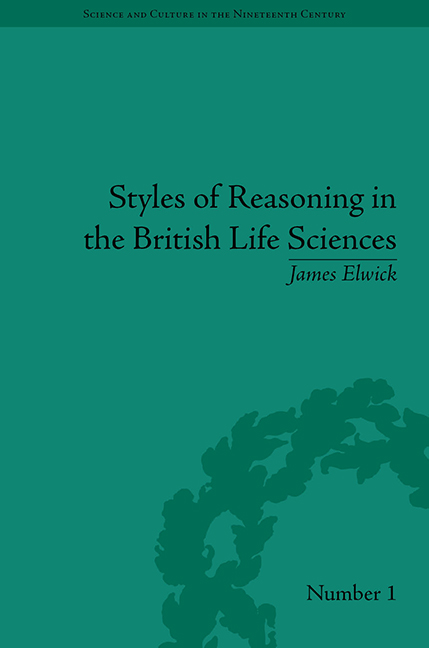3 - Synthesis
Summary
The previous two chapters investigated analysis. This chapter examines the related method of synthesis. Like analysis, synthesis channelled researchers' attention onto the problematics of spontaneous order and compound individuality. Recapitulation – the ‘parallelism’ of the development of the embryo and the place of a species on the animal scale – fascinated them, for it was a process whereby dispersed and independent parts fused together into an integrated whole. Specific research questions included: how was an embryo's development similar to the process of insect metamorphosis, resembling the fusion of parts into a compound whole? How did monsters – frequently doubled animals, such as conjoined twins – grow, and what commonalities did they have with lower animals?
This chapter also considers several questions pertinent to the history of British biology between 1830 and 1850. Why was there such an enormous emphasis upon recapitulation before von Baerian embryology really took hold in British life research? Why were there continuous discussions about more ‘perfect’ or ‘higher’ animals in a scale of being? Why was there an emphasis on ‘centripetal’ patterns of development, set against ‘centrifugal’ patterns? At an even higher level is a question relevant for historians of biology in general: what does the recurrence of a number of organisms in textbooks, lectures and research articles – here called exemplar organisms – say about how life researchers were educated?
Cephalization
It has been noted how Cuvier tried to use nervous structure as one taxonomic index. He implicitly depicted animals as higher or lower according to their proportion of nervous tissue. In the mid-1830s both Grant and Owen adopted Cuvier's method and other British researchers followed them, for Cuvier was seen as vindicated by another commonplace belief – that embryos developed by fusing parts. In so doing each part's ganglion became concentrated in a central location. In 1834 Newport noted how it was ‘well known’ that, during development, nerves tended to ‘approach and unite with each other, the lateral cords and ganglia are more closely approximated, and the ganglia in the anterior part of the body approach and coalesce into one mass’.
- Type
- Chapter
- Information
- Styles of Reasoning in the British Life SciencesShared Assumptions, 1820–58, pp. 65 - 86Publisher: Pickering & ChattoFirst published in: 2014



